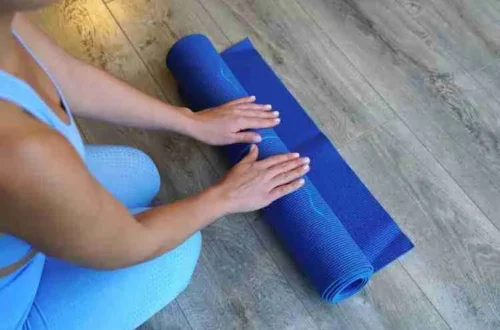Meditation isn’t just sitting cross-legged with your eyes closed—it’s a journey to calm your mind, reconnect with yourself, and find balance in a chaotic world. Whether you’re stressed from work, seeking emotional clarity, or simply craving a moment of peace, meditation offers a powerful path to wellness. I remember my first attempt at meditation: I sat in my living room, surrounded by laundry and a buzzing phone, thinking, “How is this supposed to help?” But with practice, I found a quiet space within myself that transformed my days. In this guide, we’ll explore meditation’s benefits, techniques, and practical tips to help you cultivate inner peace and wellness, no matter your experience level.
What Is Meditation?
Meditation is a practice that trains your mind to focus, fostering awareness and emotional balance. It’s rooted in ancient traditions but backed by modern science for reducing stress and improving well-being. From mindfulness to mantra-based techniques, meditation is accessible to everyone.
The Science Behind Meditation
Studies show meditation reduces cortisol levels, boosts serotonin, and enhances brain function. It can lower anxiety, improve focus, and even promote better sleep. Research from Harvard Medical School highlights how mindfulness meditation thickens the prefrontal cortex, aiding decision-making.
Why Meditation Matters Today
In our fast-paced world, stress is a constant companion. Meditation offers a pause button, helping you manage overwhelm and find clarity. It’s like a mental gym, building resilience to face life’s challenges with calm and confidence.
Benefits of Meditation for Inner Peace and Wellness
Meditation isn’t a one-size-fits-all fix, but its benefits are vast and well-documented. Below, we’ll dive into how it transforms your mental, physical, and emotional health, with real-life examples to show its impact.
Mental Health Benefits
Meditation sharpens focus, reduces anxiety, and promotes emotional stability. It’s like clearing the fog from your mind, helping you think more clearly. A 2019 study in The Lancet found mindfulness meditation reduced depression symptoms by 30% in participants.
Reduced Stress and Anxiety
Meditation lowers stress by calming the nervous system. Techniques like deep breathing activate the parasympathetic response, reducing fight-or-flight reactions. I’ve personally found five minutes of focused breathing can melt away a day’s tension.
Improved Focus and Concentration
Regular meditation enhances attention span and cognitive function. Practices like mindfulness train your brain to stay present, reducing distractions. A friend of mine, a teacher, uses meditation to stay sharp during long grading sessions.
Enhanced Emotional Resilience
Meditation helps you respond to challenges with calm rather than reacting impulsively. It builds a buffer against emotional triggers. After a tough breakup, I leaned on meditation to process my feelings without spiraling.
Physical Health Benefits
Meditation doesn’t just soothe the mind—it benefits the body, too. From lowering blood pressure to improving sleep, its effects are holistic. It’s like giving your body a daily dose of calm.
Better Sleep Quality
Meditation promotes relaxation, making it easier to fall and stay asleep. A 2020 study in JAMA Internal Medicine found mindfulness improved insomnia in 60% of participants. I use a guided sleep meditation when my mind won’t quiet down at night.
Lower Blood Pressure
By reducing stress, meditation can lower blood pressure. Research from the American Heart Association shows mindfulness practices decrease systolic pressure by up to 10 mmHg. This is a game-changer for heart health.
Pain Management
Meditation can reduce chronic pain perception. A 2017 study in Pain journal found mindfulness reduced pain intensity by 25%. My aunt, who has arthritis, swears by meditation to ease her discomfort.
Emotional and Spiritual Benefits
Meditation fosters a deeper connection to yourself and others. It’s like planting a seed of peace that grows over time. It can transform how you relate to the world around you.
Greater Self-Awareness
Meditation helps you understand your thoughts and emotions. Practices like body scans reveal hidden tensions. I discovered my habit of overthinking during a silent meditation retreat—it was a wake-up call.
Increased Compassion
Loving-kindness meditation cultivates empathy for yourself and others. It’s like softening the edges of your heart. A colleague started this practice and noticed she was kinder to her coworkers.
Spiritual Connection
For many, meditation deepens spiritual awareness, whether through religious or secular practices. It’s a way to feel grounded in something bigger. My neighbor finds peace meditating in her garden, feeling connected to nature.
Types of Meditation for Inner Peace
There’s no “right” way to meditate—different techniques suit different needs. Below are popular types, each with unique benefits and steps to get started. Try a few to find what resonates.
Mindfulness Meditation
This practice involves focusing on the present moment without judgment. It’s ideal for beginners and helps reduce stress. Sit quietly, focus on your breath, and gently bring your mind back when it wanders.
How to Practice Mindfulness
Find a quiet spot, sit comfortably, and focus on your breath for 5–10 minutes. Notice sensations without reacting. Apps like Headspace offer guided sessions to ease you in.
Guided Meditation
Guided meditations use audio or video to lead you through a practice. They’re perfect for beginners or those who struggle to focus. You’ll follow a teacher’s voice, visualizing calming scenes or affirmations.
Best Platforms for Guided Meditation
Apps like Calm and Insight Timer offer free and paid guided sessions. YouTube also has free options, like Yoga with Adriene’s meditation videos. I started with a 10-minute Calm session and felt instantly relaxed.
Loving-Kindness Meditation
Known as Metta, this practice focuses on cultivating compassion. You repeat phrases like “May I be happy” for yourself and others. It’s a heart-opening way to build emotional warmth.
Steps for Loving-Kindness
Sit quietly, close your eyes, and silently repeat phrases like “May I be safe, may I be healthy.” Extend these wishes to loved ones, acquaintances, and even strangers. It’s surprisingly uplifting.
Transcendental Meditation
This mantra-based practice involves silently repeating a word or sound to settle the mind. It’s structured and often taught by certified instructors. It’s great for deep relaxation and focus.
Finding a Transcendental Meditation Teacher
Visit tm.org to find certified instructors near you. Classes typically involve personalized mantras and follow-up sessions. My cousin swears by TM for her anxiety.
Body Scan Meditation
This practice involves mentally scanning your body for tension, promoting relaxation. It’s excellent for stress relief and sleep. Lie down and slowly focus on each body part, releasing tightness.
Quick Body Scan Guide
Lie flat, close your eyes, and focus on your toes, moving up to your head over 10–15 minutes. Notice sensations without judgment. I use this before bed to unwind completely.
Comparison of Meditation Types
| Type | Best For | Time Needed | Difficulty | Tools Needed |
|---|---|---|---|---|
| Mindfulness | Stress relief, focus | 5–20 min | Easy | None |
| Guided | Beginners, focus issues | 10–30 min | Easy | App or audio |
| Loving-Kindness | Compassion, emotional health | 10–20 min | Moderate | None |
| Transcendental | Deep relaxation | 20 min | Moderate | Instructor |
| Body Scan | Physical relaxation, sleep | 10–30 min | Easy | None |
Pros and Cons of Meditation
Pros:
- Accessible: Requires no equipment and can be done anywhere.
- Versatile: Offers techniques for various goals, from stress relief to spiritual growth.
- Science-Backed: Proven to improve mental and physical health.
- Free or Low-Cost: Many resources, like apps or YouTube, are free.
Cons:
- Time Commitment: Regular practice is needed for lasting benefits.
- Initial Discomfort: Beginners may find it hard to focus or sit still.
- Not Instant: Results take time, which can frustrate some.
- Overwhelm: Too many techniques can feel daunting for newbies.
How to Start Meditating
Starting meditation can feel intimidating, but it’s simpler than it seems. Here’s a step-by-step guide to ease you into a practice that sticks, plus tips to overcome common hurdles.
Step 1: Set a Clear Intention
Decide why you want to meditate—stress relief, better sleep, or emotional clarity. A clear goal keeps you motivated. I started meditating to manage work stress, which gave me focus.
Step 2: Choose a Comfortable Space
Find a quiet, clutter-free spot where you won’t be disturbed. It could be a corner of your bedroom or a park bench. I use a cozy chair by my window.
Step 3: Start Small
Begin with 5-minute sessions to build a habit. Gradually increase time as you get comfortable. Short sessions helped me stick with meditation without feeling overwhelmed.
Step 4: Use Tools and Resources
Apps, books, or classes can guide your practice. Try Insight Timer for free meditations or read The Power of Now by Eckhart Tolle for inspiration.
Step 5: Be Patient
Your mind will wander—that’s normal. Gently redirect your focus without judgment. I used to get frustrated, but learning to laugh at my wandering thoughts made it easier.
Best Tools for Meditation
- Meditation Apps: Headspace, Calm, and Insight Timer offer guided sessions for all levels.
- Cushions or Benches: Zafu cushions from Gaiam provide comfort for seated meditation.
- Noise-Canceling Headphones: Bose or Sony models block distractions for urban meditators.
- Journals: Track your progress with a notebook like Moleskine to reflect on your practice.
- Aromatherapy Diffusers: Use lavender or sandalwood oils to enhance relaxation.
Where to Learn Meditation
- Online Platforms: Websites like Mindful.org offer free tutorials and articles.
- Local Classes: Check community centers or yoga studios for in-person sessions. I found a great class at my local YMCA.
- Books: Wherever You Go, There You Are by Jon Kabat-Zinn is a beginner-friendly guide.
- Retreats: Silent retreats, like those at Spirit Rock, offer immersive experiences.
People Also Ask (PAA)
What is the best meditation for inner peace?
Mindfulness and loving-kindness meditations are top choices for inner peace. They focus on present-moment awareness and compassion, reducing stress. Start with a 10-minute guided session for best results.
How long should I meditate daily?
Beginners should aim for 5–10 minutes daily, gradually increasing to 20–30 minutes. Consistency matters more than duration. Even a short session can calm your mind significantly.
Can meditation help with anxiety?
Yes, meditation reduces anxiety by lowering cortisol and promoting relaxation. Studies show mindfulness can decrease anxiety symptoms by up to 38%. Regular practice builds long-term resilience.
Is meditation suitable for beginners?
Absolutely, meditation is beginner-friendly with practices like guided sessions or mindfulness. Start with short, simple exercises and use apps to stay motivated. Patience is key to success.
FAQ
How do I know if I’m meditating correctly?
There’s no “wrong” way to meditate. If you’re focusing on your breath or a mantra and gently redirecting distractions, you’re on the right track. Progress comes with practice.
Can meditation replace therapy?
Meditation supports mental health but isn’t a substitute for therapy. It complements professional help by reducing stress and enhancing self-awareness. Consult a therapist for serious concerns.
What’s the best time to meditate?
Morning or evening works best, depending on your schedule. Morning meditation sets a calm tone for the day, while evening helps you unwind. I prefer mornings for clarity.
Do I need to sit cross-legged to meditate?
No, you can meditate sitting, lying down, or even walking. Choose a position that’s comfortable for you. I often meditate lying down when I’m too tired to sit.
Can kids practice meditation?
Yes, kids can benefit from simple mindfulness or guided meditations. Apps like Smiling Mind offer kid-friendly sessions. My niece loves a 5-minute bedtime meditation.
Tips for a Successful Meditation Practice
- Create a Routine: Meditate at the same time daily to build a habit.
- Mix Techniques: Try different styles to keep your practice fresh and engaging.
- Use Music or Nature Sounds: Soft background sounds can enhance focus.
- Join a Community: Online or local meditation groups provide support and motivation.
- Celebrate Small Wins: Acknowledge progress, like feeling calmer after a session.
Final Thoughts
Meditation is a gift you give yourself—a chance to pause, breathe, and find peace in a hectic world. Whether you’re seeking stress relief, better sleep, or a deeper connection to yourself, the practices and tools in this guide can help you start. My own journey began with skepticism but led to moments of clarity I now cherish. Explore resources like Calm or local classes, and take that first step toward inner peace and wellness today. You’ve got this—one breath at a time.





